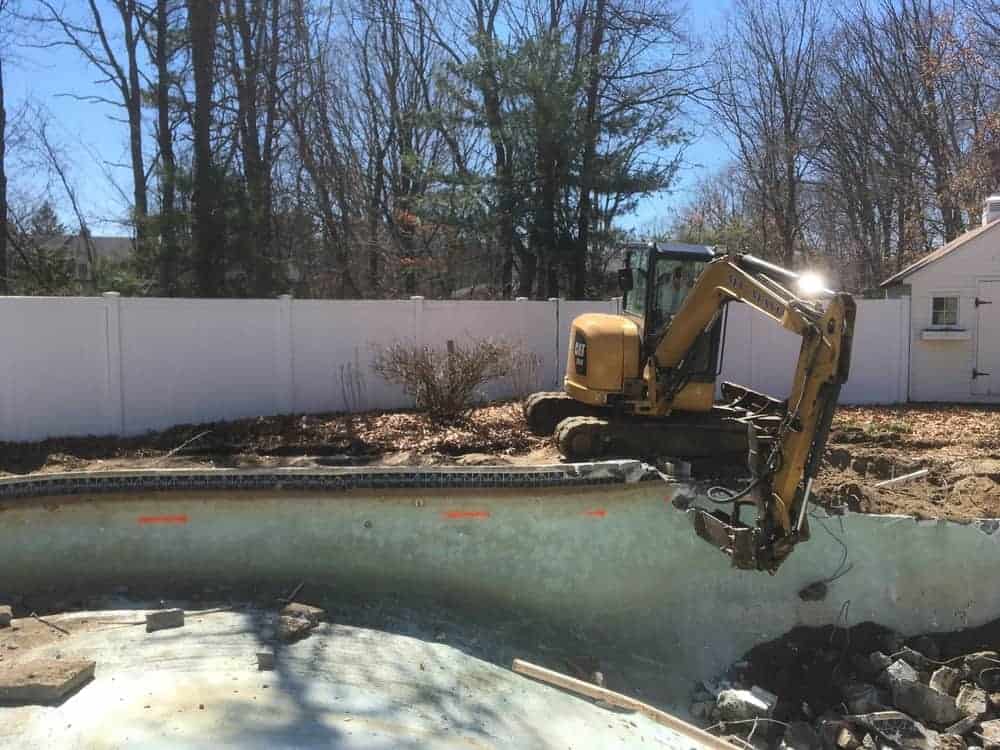How to Safely and Efficiently Remove Your Swimming Pool
Owning a swimming pool can be a luxury, but there are times when removing your swimming pool becomes the best option. Whether you’re looking to free up space in your yard, reduce maintenance costs, or simply no longer enjoy the pool, understanding how to remove your swimming pool can help you make an informed decision. Pool removal can be a significant project, and it’s essential to plan carefully, ensuring it is done safely and in compliance with local regulations.
In this article, we will explore why you might consider removing your swimming pool, the steps involved in the process, and the benefits of pool removal.
Why Remove Your Swimming Pool?
There are several reasons why homeowners decide to remove their swimming pool. Here are some of the most common:
- High Maintenance Costs: Pools require regular maintenance, including cleaning, chemicals, and equipment upkeep. Some homeowners find the costs associated with maintaining a pool to be too high, particularly if the pool is not being used regularly.
- Space Utilization: Pools take up a significant amount of space. If you’re not using the pool, or if it is outdated, removing it opens up your yard for other purposes. Whether you want to create a garden, build a deck, or add a new structure, pool removal gives you more flexibility.
- Safety Concerns: For families with young children or pets, an unused or unsafe pool can pose a risk. Pool removal eliminates the potential danger of accidental falls, making your yard safer.
- Pool Condition: Older pools may begin to deteriorate, leading to costly repairs. If a pool is cracked, leaking, or suffering from structural issues, removal may be a more cost-effective solution compared to extensive repairs.
- Increasing Property Value: Depending on the location and market conditions, removing an old, unused pool may actually increase your property value. Potential buyers may prefer a larger, open yard instead of a pool that requires maintenance.
Steps Involved in Removing Your Swimming Pool
The process of removing your swimming pool can vary based on the type of pool (inground or above-ground) and its condition. Here’s an outline of the steps involved:
1. Consult with a Pool Removal Professional
Before starting the removal process, it’s essential to consult with a pool removal professional who can evaluate the pool, recommend the best removal method, and provide an estimate. Experienced professionals will ensure the job is done correctly and safely while adhering to local regulations.
2. Obtain Permits and Approvals
In many areas, pool removal requires a permit. Local regulations often dictate how a pool should be removed and how the site should be restored. Ensure that you check with your local municipality for any zoning, waste disposal, or other regulations that might apply to your pool removal.
3. Drain the Pool
The first step in the actual removal process is draining the pool. A professional will pump out the water in the pool, ensuring that all debris and chemicals are properly disposed of. If your pool has a plumbing system connected to it, it will need to be disconnected to avoid any issues during the removal.
4. Demolish the Pool Structure
Once the pool is drained, the next step is to break down the pool structure. For inground pools, this usually involves removing the pool shell, whether it’s made of concrete, fiberglass, or vinyl-lined materials. Concrete pools, which are the most common type, are typically demolished with heavy equipment like jackhammers, excavators, and cranes.
- For concrete pools: The pool shell is broken up into manageable pieces, which are then removed and hauled away. Sometimes, the pool is partially filled with dirt during this stage to help fill in the hole and ensure a smooth transition for the next step.
- For fiberglass or vinyl pools: These pools are typically easier to remove, as the pool walls are lighter and can be removed intact. The pool is usually excavated, and the structure is then taken away.
5. Fill the Pool Hole
After the pool shell is removed, the hole left behind must be filled with suitable materials. This is typically done in one of two ways:
- Partial Backfill: In some cases, the pool is filled with a combination of dirt, sand, and gravel. This method helps compact the area and provides drainage to prevent any water buildup. It’s a less expensive and quicker method.
- Complete Backfill with Compaction: For a more thorough removal, the hole is filled with layers of clean fill material. The fill is compacted as it’s added to ensure proper settling and avoid sinking or uneven ground later on. This method is often recommended for areas where future construction or landscaping will occur.
6. Restoration of the Yard
Once the pool hole is filled, the next step is to restore the yard. This can involve several tasks:
- Levelling: Ensuring that the area is level and free from any uneven spots.
- Sod and Landscaping: Planting grass or installing landscaping to blend the area seamlessly with the rest of your yard. You may also decide to add features such as a patio, deck, or garden bed in place of the pool.
At this stage, the yard should appear as though the pool was never there, and you will have a usable outdoor space to enjoy.
Benefits of Removing Your Swimming Pool
Removing your pool comes with numerous benefits, including:
1. Increased Property Value
While it may seem counterintuitive, removing an old, unused pool can actually increase the value of your property, particularly if the pool is outdated, unkempt, or not in use. Potential buyers may prefer an open yard where they can envision their own landscaping or a new feature rather than inheriting an unwanted pool.
2. Lower Maintenance Costs
Owning a pool comes with ongoing costs for maintenance, repairs, and cleaning. By removing the pool, you eliminate these costs and free up funds for other home improvements or investments.
3. Safety and Peace of Mind
For families with young children or pets, an empty or unused pool can pose a safety hazard. Pool removal helps ensure that your yard is a safer place for everyone, giving you peace of mind, especially if the pool has become a liability.
4. Environmental Considerations
Pools require substantial water usage and energy for maintenance. Removing the pool can help reduce water consumption and energy costs, especially if the pool was using a pump or heating system that consumed significant energy.
Conclusion
Whether you’re looking to remove your swimming pool for aesthetic reasons, safety concerns, or simply to reduce ongoing maintenance costs, the process of pool removal is a significant decision. It’s important to work with professionals who understand the intricacies of pool demolition and disposal. Proper planning and execution will ensure that your property is restored to its full potential, giving you a new outdoor space to enjoy.
If you’re considering pool removal, reach out to trusted specialists to get an estimate and learn more about the removal process. By taking the necessary steps and adhering to local guidelines, you’ll have a transformed yard that adds value, safety, and beauty to your property.






